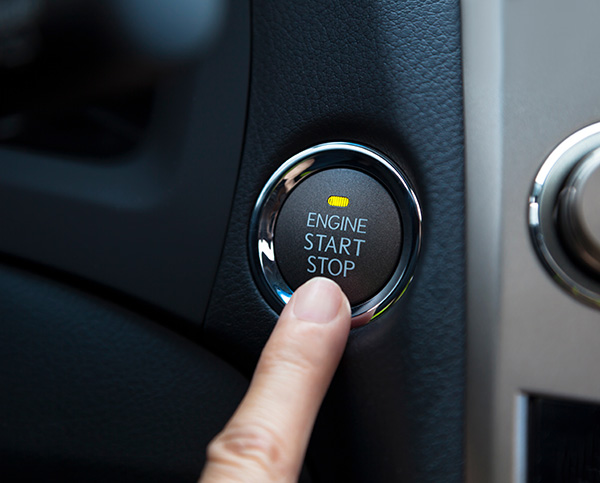
Modern vehicles come equipped with all sorts of high-tech features designed to improve efficiency, reduce emissions, and enhance the driving experience. One of these innovations that has become increasingly common is the engine auto-start-stop system. If you've ever been at a red light and noticed your engine shut off, only to start up again as soon as you lift your foot off the brake, then you've experienced this feature firsthand. But how exactly does it work? We will explain the mechanics and benefits of the engine auto-start-stop system and why it’s become a standard in many new cars.
What Is an Engine Auto-Start-Stop System?
At its core, the auto-start-stop system is designed to save fuel and reduce emissions by automatically turning off your vehicle's engine when it's idling, such as when you're stopped at a red light or in heavy traffic. The system then seamlessly restarts the engine when you’re ready to move again, typically when you release the brake pedal or engage the clutch in manual vehicles.
This feature might seem like a minor convenience, but it can significantly improve fuel efficiency, especially in urban environments where stop-and-go traffic is common. The system is smart enough to know when it’s appropriate to stop the engine and when to keep it running, ensuring that you don’t lose power to essential systems like the air conditioning or infotainment unit.
How Does the System Know When to Stop and Start?
You might wonder how the system knows exactly when to stop the engine and when to restart it without disrupting your driving experience. The answer lies in a series of sensors and control units that constantly monitor the vehicle's status and driving behavior.
Brake Pedal Pressure
One of the primary triggers for the auto-start-stop system is the brake pedal. When you press the brake pedal to bring the car to a complete stop, the system detects the pressure and prepares to turn off the engine. As soon as you release the brake, the system knows to restart the engine so you can accelerate without any noticeable delay.
Battery Condition
The system also monitors the health and charge level of the vehicle's battery. Since the battery is responsible for powering the starter motor during restarts, the system will only engage if the battery is in good condition and has enough charge to restart the engine multiple times during a single trip.
Engine Temperature
Another factor the system considers is the engine’s temperature. If the engine is too cold, the system may delay shutting it off to ensure optimal operating conditions are maintained. This helps avoid any potential issues that could arise from starting and stopping the engine repeatedly when it's not yet warmed up.
Climate Control Settings
The auto-start-stop system also takes into account the settings of your climate control system. If the air conditioning or heating is running at full blast, the system might keep the engine running to maintain your comfort. The last thing you want is for the cabin temperature to rise or fall drastically while you’re stopped in traffic.
The Benefits of Auto-Start-Stop Systems
So, why have auto-start-stop systems become so popular in modern vehicles? The benefits are twofold: environmental and economic.
Fuel Savings
By shutting off the engine when it’s not needed, you can save a significant amount of fuel, especially during long periods of idling. This not only saves money at the pump but also helps reduce your vehicle’s carbon footprint.
Reduced Emissions
Every second your engine is off is a second you’re not emitting harmful pollutants into the environment. In densely populated areas where traffic congestion is common, these small reductions in emissions can add up to make a big difference.
Quieter Operation
An added benefit of the auto-start-stop system is a quieter cabin environment when the engine is off. This can make those moments at a standstill more peaceful and less fatiguing, especially during long commutes.
Potential Downsides to Be Aware Of
While the auto-start-stop system offers numerous benefits, it’s not without its drawbacks. Some drivers find the constant starting and stopping of the engine to be slightly jarring, although most systems are designed to be as smooth as possible.
The frequent restarts can put extra strain on the starter motor and battery, potentially leading to more frequent maintenance or earlier replacement of these components. However the vehicles equipped with auto-start-stop systems also have upgraded starters and batteries designed to handle this additional load.
Maintaining Your Auto-Start-Stop System
To ensure your auto-start-stop system continues to operate efficiently, regular maintenance is key. Make sure your vehicle’s battery is in good health, as a weak battery can compromise the system’s ability to function properly. It’s also important to have your starter motor inspected during routine maintenance checks, especially if you notice any delays or issues with the engine restarting.
If you find the system bothersome, many vehicles allow you to disable it temporarily, either through a button on the dashboard or within the vehicle's settings menu. However, keeping it enabled will provide the maximum benefits in terms of fuel savings and emission reductions.
Want to make sure your auto-start-stop system is working as it should? Head over to Ocala Auto Repair for a comprehensive vehicle inspection. We’ll help you maximize your car’s efficiency and performance. Book your visit today!